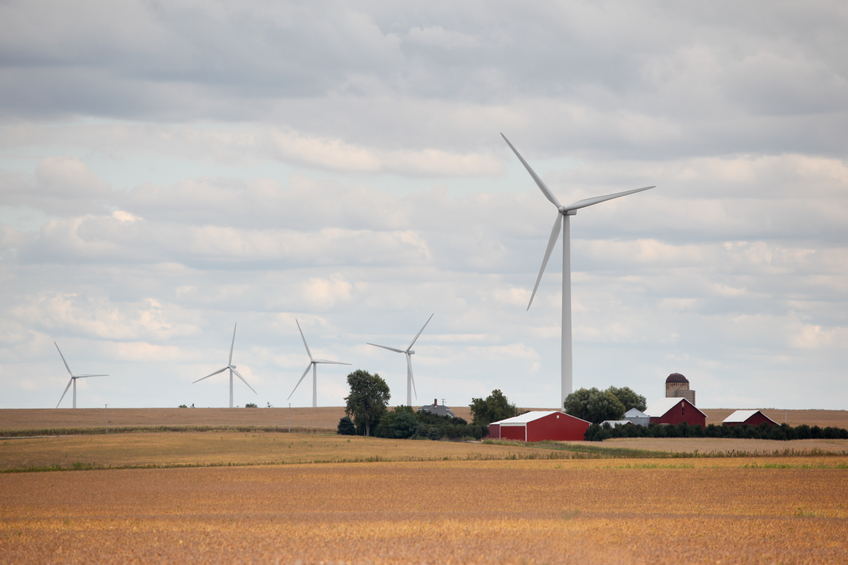Utility green pricing programs (GPPs) have become an increasingly familiar offering across the U.S., but many utilities still have chosen not to launch a GPP, and many that have are finding that marketing these programs is a challenge. Lori Bird and Marshall Kaiser found in their October 2007 National Renewable Energy Laboratory (NREL) report, "Trends in Utility Green Pricing Programs (2006)," that only a quarter of all U.S. utilities offer GPPs. Furthermore, Bird and Kaiser explain that a small number of existing programs represent the bulk of overall GPP customer participation.
"Continued industry growth will depend largely on the introduction of new programs," the authors write, "and the extent to which the practices and the success of the top-performing programs can be emulated by other utilities."
At the 12th National Renewable Energy Marketing Conference in Philadelphia, Oct. 21 through Oct. 24, seven representatives of utilities that offer some of the most successful GPPs in the U.S. sat on a panel to discuss not only the reasons utilities should provide a GPP, but also issues utilities will face in marketing these programs.
"Our customers expect programs like this," said panel member Kathy Lentini, manager of marketing for PECO, Pennsylvania's largest utility. "Whether or not they participate is one thing. They expect us to provide options for them and to give them choices."
Other panelists identified GPPs as a means for providing customers a sense of personal satisfaction. Joyce Kinnear, public benefit program manager for Silicon Valley Power, said GPPs offer an alternative for customers who are seeking opportunities to go beyond the green generation to which the utility is dedicated in its portfolio.
"Customers look at these programs as a way to feel better about what they're doing for the environment," added Thor Hinckley, manager of Portland General Electric's (PGE) renewable power program, which includes the utility's Green Source and Clean Wind products.
Lentini proposed that by offering a GPP, utilities also could expect to improve customer satisfaction.
"We surveyed our customers, and those customers aware of PECO Wind have rated PECO eight percent to 10 percent higher in customer satisfaction than those who have not heard of PECO Wind," she said.
PECO Wind is the utility's wind power program for residential and business customers in six Pennsylvania counties. The program has made the NREL top-10 list twice for GPP enrollment. Wind power for the program is supplied by a facility in Waymart, Pa. Lentini attributed PECO Wind's success to the organization's dedication to a marketing communications strategy.
"A couple of bill inserts per year isn't going to grow the company," Lentini said during the panel discussion. "We have engaged in segmentation of customers to identify who the early adopters are and target them through direct mail messages."
Other panelists emphasized the importance of learning more about customer behaviors and opinions and giving customers what they need and want.
"We stepped back and took off the utility hat to see what customers are thinking," said Hinckley. "We found they have a small space that they dedicate to energy, and in that space, essentially, energy efficiency and renewable energy are linked."
When PGE sought to enroll customers in its GPP beyond the early adopters, Hinckley said their understanding of customer behavior pointed them to the concept of packaging the green power product with other products, programs and services. Florida Power & Light (FPL) had the same experience with its GPP – Sunshine Energy – that supports development of solar products.
"We knew that the people who participate on FPL's Sunshine Energy program participate at a much higher rate in our energy-efficiency program," said David Bates, program manager at FPL. "So, we knew that, ultimately, there will be a variety of programs that will increase participation on the GPP."
PGE explored packaging strategies further at the beginning of the year with a package that addressed the price of green power.
"We wondered, if we are selling renewable energy at a premium, is there some other package that would sell renewable energy to the first group of people that looked at the program and were interested but not sure about paying more," said Hinckley.
The initial test package that PGE designed – called Renewable Future – guaranteed a fixed rate to GPP subscribers for five years.
"That's a radically different product," said Hinckley. "We slated five average megawatts of wind power from one of our recently signed-up wind farms, and we knew that would be just about enough for 4,000 residential customers."
The program, however, was terminated in the spring when the Bonneville Power Administration (BPA) suspended payments that it had been distributing to six utilities – including PGE – to help reduce residential rates.
"That completely destroyed the economic model we were using," said Hinckley. According to BPA, the payment suspension followed a U.S. Ninth Circuit Court of Appeals ruling that the payments were inconsistent with the Northwest Power Act.
Despite the setback, Hinckley added, the program ultimately had been a success from a marketing perspective, even if the economics were risky.
"By the end of May," he said, "we had signed up nearly 3,900 customers. The package worked because it offered benefits beyond the green aspect."
© Copyright Zackin Publications Inc. All Rights Reserved.



